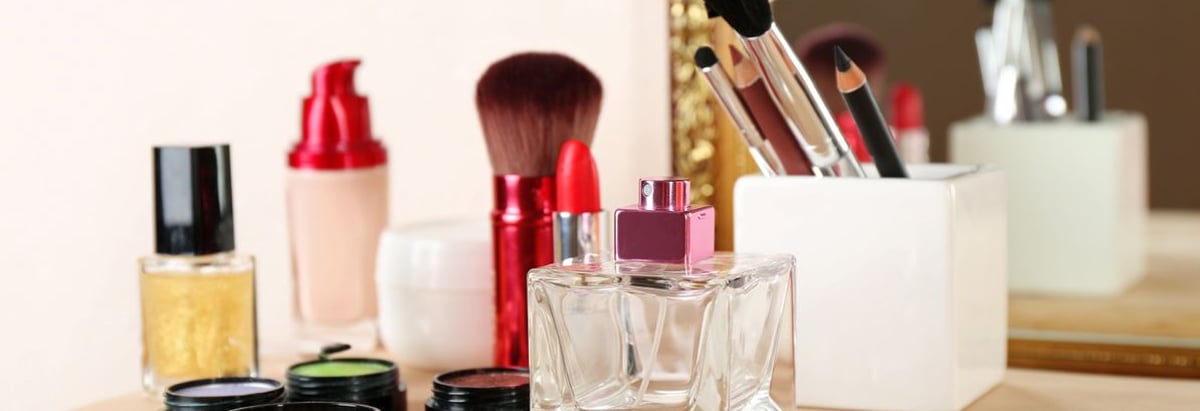- Hong Kong
- /
- Personal Products
- /
- SEHK:973
L'Occitane International (HKG:973) Could Easily Take On More Debt

Warren Buffett famously said, 'Volatility is far from synonymous with risk.' So it seems the smart money knows that debt - which is usually involved in bankruptcies - is a very important factor, when you assess how risky a company is. As with many other companies L'Occitane International S.A. (HKG:973) makes use of debt. But the more important question is: how much risk is that debt creating?
When Is Debt A Problem?
Debt and other liabilities become risky for a business when it cannot easily fulfill those obligations, either with free cash flow or by raising capital at an attractive price. In the worst case scenario, a company can go bankrupt if it cannot pay its creditors. While that is not too common, we often do see indebted companies permanently diluting shareholders because lenders force them to raise capital at a distressed price. Of course, debt can be an important tool in businesses, particularly capital heavy businesses. When we examine debt levels, we first consider both cash and debt levels, together.
View our latest analysis for L'Occitane International
What Is L'Occitane International's Net Debt?
As you can see below, at the end of March 2022, L'Occitane International had €670.9m of debt, up from €522.1m a year ago. Click the image for more detail. On the flip side, it has €360.9m in cash leading to net debt of about €310.0m.

A Look At L'Occitane International's Liabilities
We can see from the most recent balance sheet that L'Occitane International had liabilities of €841.6m falling due within a year, and liabilities of €852.8m due beyond that. Offsetting this, it had €360.9m in cash and €199.6m in receivables that were due within 12 months. So it has liabilities totalling €1.13b more than its cash and near-term receivables, combined.
L'Occitane International has a market capitalization of €4.75b, so it could very likely raise cash to ameliorate its balance sheet, if the need arose. However, it is still worthwhile taking a close look at its ability to pay off debt.
In order to size up a company's debt relative to its earnings, we calculate its net debt divided by its earnings before interest, tax, depreciation, and amortization (EBITDA) and its earnings before interest and tax (EBIT) divided by its interest expense (its interest cover). Thus we consider debt relative to earnings both with and without depreciation and amortization expenses.
L'Occitane International's net debt is only 0.66 times its EBITDA. And its EBIT easily covers its interest expense, being 24.1 times the size. So you could argue it is no more threatened by its debt than an elephant is by a mouse. Also positive, L'Occitane International grew its EBIT by 27% in the last year, and that should make it easier to pay down debt, going forward. When analysing debt levels, the balance sheet is the obvious place to start. But it is future earnings, more than anything, that will determine L'Occitane International's ability to maintain a healthy balance sheet going forward. So if you want to see what the professionals think, you might find this free report on analyst profit forecasts to be interesting.
Finally, while the tax-man may adore accounting profits, lenders only accept cold hard cash. So the logical step is to look at the proportion of that EBIT that is matched by actual free cash flow. Over the last three years, L'Occitane International actually produced more free cash flow than EBIT. That sort of strong cash conversion gets us as excited as the crowd when the beat drops at a Daft Punk concert.
Our View
L'Occitane International's interest cover suggests it can handle its debt as easily as Cristiano Ronaldo could score a goal against an under 14's goalkeeper. And the good news does not stop there, as its conversion of EBIT to free cash flow also supports that impression! Overall, we don't think L'Occitane International is taking any bad risks, as its debt load seems modest. So we're not worried about the use of a little leverage on the balance sheet. Above most other metrics, we think its important to track how fast earnings per share is growing, if at all. If you've also come to that realization, you're in luck, because today you can view this interactive graph of L'Occitane International's earnings per share history for free.
If you're interested in investing in businesses that can grow profits without the burden of debt, then check out this free list of growing businesses that have net cash on the balance sheet.
New: AI Stock Screener & Alerts
Our new AI Stock Screener scans the market every day to uncover opportunities.
• Dividend Powerhouses (3%+ Yield)
• Undervalued Small Caps with Insider Buying
• High growth Tech and AI Companies
Or build your own from over 50 metrics.
Have feedback on this article? Concerned about the content? Get in touch with us directly. Alternatively, email editorial-team (at) simplywallst.com.
This article by Simply Wall St is general in nature. We provide commentary based on historical data and analyst forecasts only using an unbiased methodology and our articles are not intended to be financial advice. It does not constitute a recommendation to buy or sell any stock, and does not take account of your objectives, or your financial situation. We aim to bring you long-term focused analysis driven by fundamental data. Note that our analysis may not factor in the latest price-sensitive company announcements or qualitative material. Simply Wall St has no position in any stocks mentioned.
About SEHK:973
L'Occitane International
Engages in the design, manufacture, and retail of various natural and organic ingredient-based beauty and well-being products in Asia pacific, the Americas, Europe, the Middle East, and Africa.
High growth potential low.
Similar Companies
Market Insights
Community Narratives



